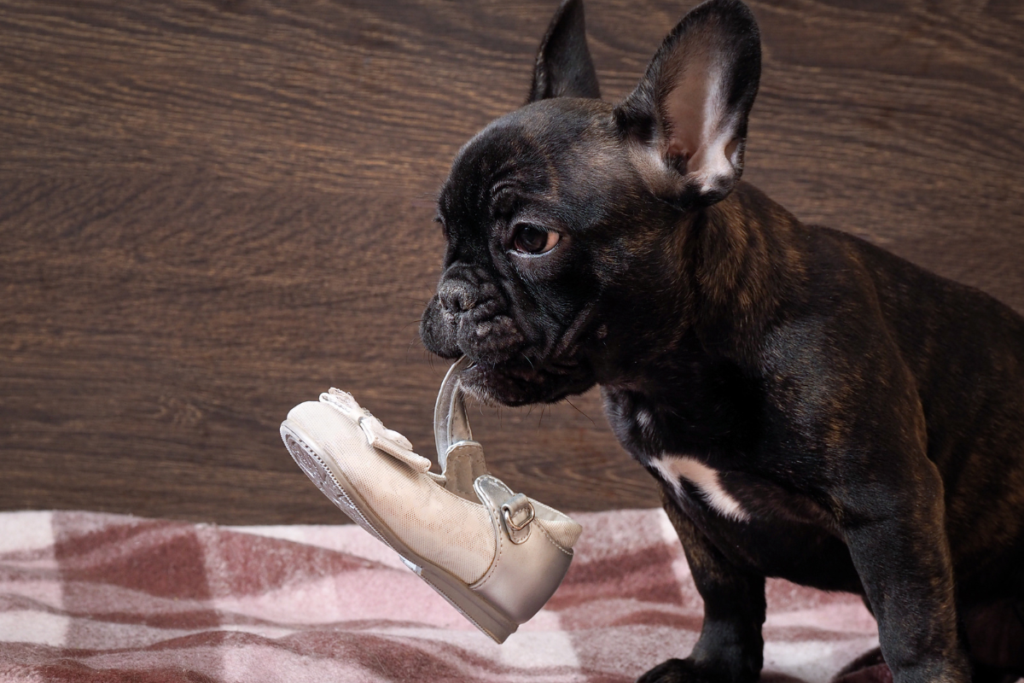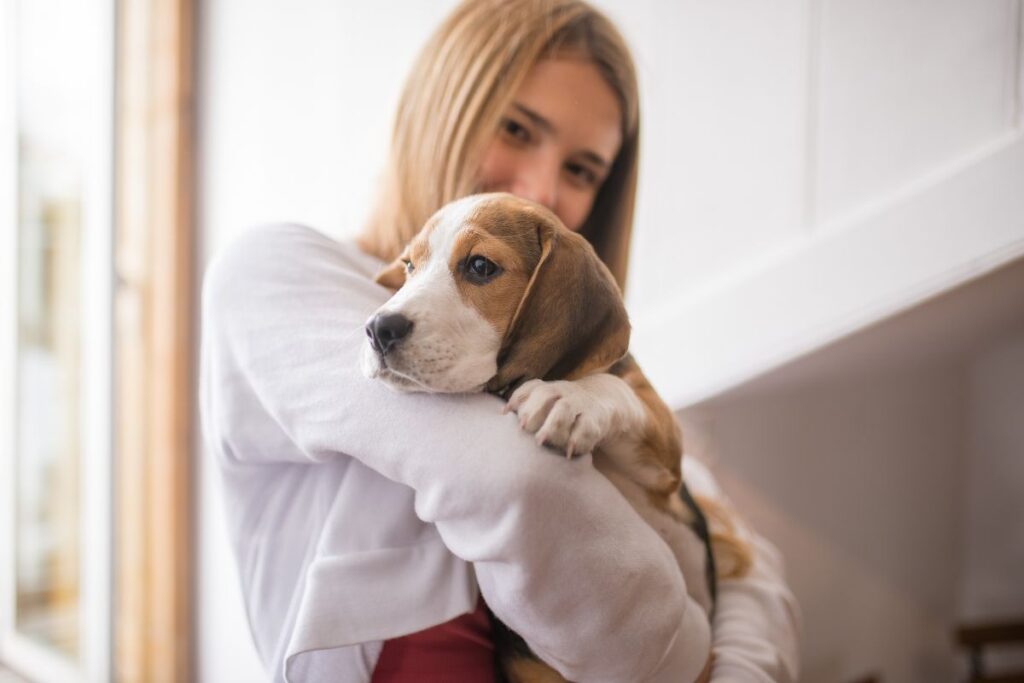If you’ve got a puppy in the house, you’ve probably already learned one thing—nothing is safe from those tiny, razor-sharp teeth! Puppy teething can turn almost anything into a chew toy. Shoes, chair legs, and couch pillows are all fair game. A teething pup will chew whatever they can get their teeth on. But don’t worry; this phase won’t last forever. With a little patience and plenty of chew toys, you and your pup will get through it with minimal damage.

Why Puppies Chew Everything in Sight
Puppies go through puppy teething just like human babies. It’s not exactly a comfortable experience. As their new teeth come in, their gums can feel sore. Chewing helps relieve that discomfort. But chewing isn’t just about puppy teething. Puppies are also little explorers. They use their mouths to understand the world around them. Sometimes, they’re just bored and looking for something fun to do. Unfortunately, that “fun” often involves your favorite sneakers.
How to Protect Your Belongings and Keep Your Puppy Happy During Teething
- Swap Shoes for Chew-Approved Toys – Your puppy is going to chew—that’s a given—so the trick is to make sure they’re chewing the right things. Stock up on durable rubber toys, rope toys, and teething rings. Freezable chew toys are a great option because the cold helps soothe sore gums. If you want to get creative, freeze a wet washcloth and let your puppy gnaw on it for a cool, soothing treat.
- Hide the Good Stuff – If you leave your shoes by the door, you’re basically putting out an open invitation for your puppy to turn them into a chew toy. Keep tempting items out of reach, and if necessary, use baby gates to keep your pup away from certain areas. This isn’t forever—just until they learn the difference between a toy and a $100 pair of running shoes.
- Make Everything Taste Terrible – For puppies who just won’t leave furniture or baseboards alone, bitter spray can be a game-changer. A quick spritz on the problem areas makes things taste awful, and after a few tries, most puppies decide it’s just not worth it. It’s safe, easy, and way better than coming home to a half-eaten coffee table.
- Turn Chewing Into a Game – Sometimes, puppies chew because they’re bored and looking for something to do. If your pup is going on a chewing spree, try redirecting that energy into a fun game. Tug-of-war, fetch, or even a good old-fashioned chase around the yard can help wear them out so they’re less likely to go on a destruction mission.
- Treat Them to Some Frozen Goodies – Cold things feel great on sore gums, so try offering your puppy some frozen treats. Frozen carrots, apple slices, or even banana chunks can double as a tasty snack and a teething soother. Plus, it’s a fun way to introduce them to new flavors while keeping them away from things they shouldn’t be chewing.
- Stay Patient; This Won’t Last Forever – Puppy teething is just a phase, and by the time your pup is around six months old, their adult teeth will be in, and the worst of the chewing should be over. In the meantime, keep redirecting them to the right things, praise them when they chew appropriately, and remember—one day, you’ll actually miss these chaotic puppy days. Well, maybe not the part where they tried to eat your entire living room.
Got a teething pup at home? What’s been their favorite thing to chew? Hopefully, not your furniture! Share your puppy stories—we’d love to hear them!

